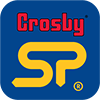There’s a good reason why successful people read a lot, says Mr. Loadlink.
“I once heard someone say that if Thomas Edison had gone to business school we would all be reading by larger candles,” writes Mark McCormack in the preface to his book titled, ‘What They Don’t Teach You At Harvard Business School’.
As the founder of the world’s first sports management company continues, “My main purpose in writing this book is to fill in many of the gaps—the gaps between a business school education and the street knowledge that comes from the day-to-day experience of running a business and managing people.”

Many light bulb moments come to nothing
And, having initially been encouraged to do so by Action Coach’s Gary Mullins, that’s really why I devour as many business-themed books as my schedule allows. In fact, I clear space in my diary to read them.
There are many gaps or spaces in everyone’s knowledge and reading is a great way to fill the voids. Getting an author’s perspectives on the challenges one is facing or might have to confront in future offers an insight into the mind of someone who has in most cases found a way to navigate a pathway to success.
It’s education of a different kind. The best business books are about thinking outside the box, which is at odds with the education much of us endured at school. Take McCormack’s point about business school: if Edison, the inventor of electric power generation, had followed the protocols and norms outlined in courseware, his light might have been dimmed. I’d never sneer at education per se—without it we wouldn’t be able to read—but a really wise person complements it with a full bookshelf.
Here are another five titles to add to your reading list—and Why:
1. The E-Myth Revisited, by Michael Gerber
The ‘E’, by the way, stands for ‘entrepreneur’. The tagline of the book, ‘Why most small businesses don’t work and what to do about it’, addresses the grim reality that many light bulb moments, dreams, and ideas come to nothing. Perhaps there should be warning stickers on business degrees and courses that states as much. Even most successful entrepreneurs have a catalogue of failures behind them and many readily point to the 50 bad ideas that preceded the one good one for which they are known.
As Gerber writes in Chapter One: “Picture the typical entrepreneur and Herculean pictures come to mind: a man or woman standing alone, wind-blown against the elements, bravely defying insurmountable odds, climbing sheer faces of treacherous rock—all to realize the dream of creating a business of one’s own.” But, he continues, “…while there are such people, my experience tells me they are rare.” As Gerber says, most entrepreneurs are such only for a short period of time. Then they cling to the rock face, not scale it.
The chapter goes on to explore the concept of entrepreneurial seizures and the fatal assumptions. The latter, for example, is to believe that if you understand the technical work of a business, you understand a business that does that technical work. “And the reason it’s fatal,” writes Gerber, “is that it just isn’t true. In fact, it’s the root cause of most small business failures!”
Gerber also looks at the beauty of an org chart, whereby the roles required one day to run a fully-fledged business are mapped out on its first day. If 47 positions are required, it’s a case of beginning with the start-up team then ticking them off as personnel are added until every spot is filled.

Success is about scaling the rock face, not hanging on for dear life
2. Mastering the Rockefeller Habits, by Verne Harnish
This book is also underscored by an overarching theme: ‘What you must do to increase the value of your growing firm’.
Having studied the life of oil industry business magnate John Rockefeller, the author identified three habits and decisions. The first habit is priorities, or key rules that the company and its employees adhere to. The second habit is data, or information about the relevant marketplace. The third habit is rhythm—the regular meetings and checkpoints that make sure everybody is aligned with the goals of the business.
The book has been something of a bible for my company, Straightpoint (SP), over the years. Every business should find its optimal cadence—the perfect rhythm at which it should trade. Look at a runner’s stride pattern even in a long race; it isn’t slow or laboured, but economical and full of bounce. Businesses should travel the same way. Momentum and pace have been keys to our success and Harnish talks about the importance of travelling at a healthy clip.
He also refers to the questions that shape decisions:
- Do we have the right people?
- Are we doing the right things?
- Are we doing those things right?
- Regularly put them to your business.

Find the optimal cadence
3. Fanatical Prospecting, by Jeb Blout
Another must-read, this book is the ultimate guide to opening sales conversations and filling the pipeline by leveraging social selling, telephone, email, text, and cold calling.
Here at SP we’re obsessed with filling our pipe. By that I mean we recognise that no business can survive without leads and orders, which are generated by prospecting. Blout writes about how, “Savvy sales professionals are super disciplined in qualifying prospects. They understand that time is money and it is a waste of time to work with prospects that are not going to buy. They know that qualified buyers are scarce, and a moment spent with a prospect who will never buy takes them away from their most important task—finding prospects that will buy.”
My interpretation of much of the guidance in Fanatical Prospecting is in the importance of a sales squad leveraging a marketing team but not relying upon it. Successful people generate their own leads; they delve deep into markets to find the prospects that perhaps didn’t surface as a result of a marketing campaign. These smart salespeople have a profile in mind of the ideal customer and know where to look for them. It’s not that the marketing team aren’t working to the same objective—they are—but sometimes it’s only at the coalface can some purchasers be found.
This book is particularly applicable to businesses that are prepared to work hard to generate results. It’s not about short cuts. And I like that.

There’s an art to prospecting
4. They Ask, You Answer, by Marcus Sheridan
This is a very current text about taking a revolutionary approach to inbound sales, content marketing, and today’s digital consumer.
It acknowledges that customers now turn to the Internet for everything. “If I had a question, I went to Google and asked,” Sheridan writes. The power, therefore, must be in having the answers, he thought. So, all he had to do as a swimming pool salesman, was to become an expert on fibreglass pools.
He continues, “When an organisation embraces They Ask, You Answer, they believe it’s their duty to be the teacher, the go-to source within their particular industry. One that’s not afraid to answer any and every question the prospect or customer may have. For them, it’s a moral obligation to do this, regardless of whether the question is perceived as good, bad, or even ugly.”
The book points out a reality that most businesses only talk about themselves and don’t focus on what prospects and customers are thinking about. How ignorant.
At SP, we talk about the TAYA (They Ask, You Answer) questions after every trade show:
- What was the marketplace asking for?
- Are we seen to have the answers?

Smart businesses have the answers to their audience’s questions
5. Start With Why, by Simon Sinek
This is an old favourite and one of the most popular business texts around.
As Sinek wrote at the time of going to print, “There are leaders and there are those who lead. With only six per cent market share in the U.S. and about three per cent worldwide, Apple is not a leading manufacturer of home computers. Yet the company leads the computer industry and is now a leader in other industries as well. Martin Luther King’s experiences were not unique, yet he inspired a nation to change. The Wright brothers were not the strongest contenders in the race to take the first manned, powered flight, but they led us into a new era of aviation and, in doing so, completely changed the world we live in.”
The Start With Why concept is based on the power of an audience believing in a purpose. Making money, Sinek says, is a consequence of being a business, not the Why it exists. It’s the Why that people buy into.

What’s your Why?
To bookend my latest blog with quotes from Mark McCormack, I’ll close with another one, from a section of his text about three hard-to-say phrases:
1. I don’t know
2. I need help
3. I was wrong
“An ability to say ’I was wrong’ is essential to success because it’s cathartic,” he writes.
In other words, it’s purifying and makes us feel better. It’s remarkable therefore that it’s so rarely said.
Happy reading.
Mr. Loadlink
